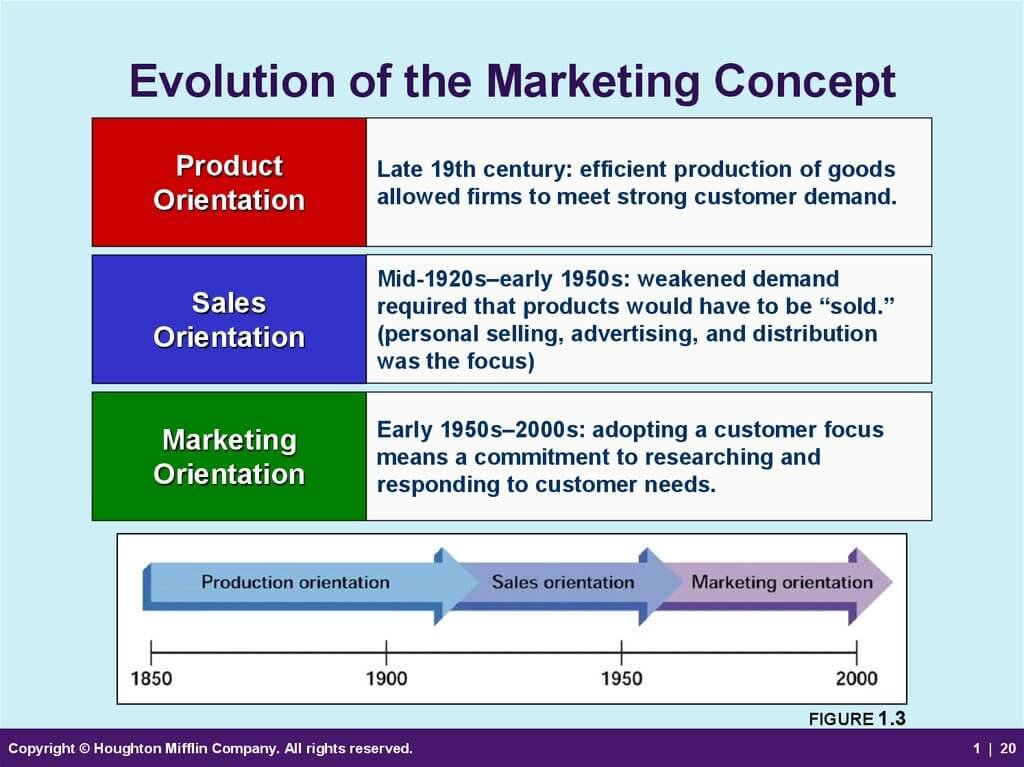Modern marketing has its roots in the transformative periods of the Industrial Revolutions in the 18th and 19th centuries. These revolutions, notably in Britain, the USA, and Germany, witnessed major advances in production and distribution, paralleled by the migration of rural populations to urban centers. This shift laid the foundation for large-scale markets.
As business leaders recognized the potential of these markets, marketing institutions began to emerge. These included advertising media and distribution channels. Marketing as an academic discipline began taking shape in the early 20th century, originally stemming from courses focusing on distribution.
The predominant focus of marketing courses in the 1950s and 1960s was centered on ‘how to do it,’ with a strong emphasis on marketing techniques.
Despite this long history, not all companies have embraced a marketing orientation. Many have adopted an inward-looking approach, with their primary focus being on their existing products or internal operations. This perspective can be traced back to the emergence of mass production in the USA during the 1920s and 1930s. Inward-focused companies are characterized by:

1. Production Orientation: This stance places great emphasis on current production capabilities, with success attributed to the quality and innovation of products. For instance, this approach may overlook customer needs, resulting in unsuitable products.
2. Sales Orientation: Companies with this perspective prioritize sales efforts to persuade customers to buy their offerings, often stemming from an era when mass production led to an oversupply of products. Sales forces are heavily relied upon in industries like pharmaceuticals.
3. Customer-oriented: On the other hand, customer-oriented companies closely interact with their customers, comprehending their needs and problems. Market research is crucial, and close customer contact is vital to adapt to changing preferences. Satisfied customers often become brand advocates, driving sales.
The progression through these three orientations is not always chronological, as all three orientations are still common in business practices. In recent years, newer business orientations have emerged, such as the societal marketing concept, which emphasizes sustainable and responsible business practices. This concept underscores delivering value to customers while considering the well-being of both consumers and society.
Furthermore, businesses are recognizing that understanding customer needs alone may not suffice. Sometimes, organizations need to lead markets by identifying unspoken needs. Market-driven or outside-in firms aim to anticipate and identify consumer needs and adapt to meet current and future demand. This approach, based on relational exchanges and co-created value, challenges traditional economic models of marketing.
In summary, market-oriented businesses prioritize customer concern throughout their operations, investing in market research, tracking market changes, and viewing marketing spend as an investment. They remain agile, adaptable, and focused on consumer satisfaction, representing one end of the spectrum, while internally oriented businesses fall at the other end, often missing the crucial insights driven by customer needs.
Source: Fahy, J. and Jobber, D. (2015) Foundations of marketing. Fifth edn. London: McGraw-Hill Education.



